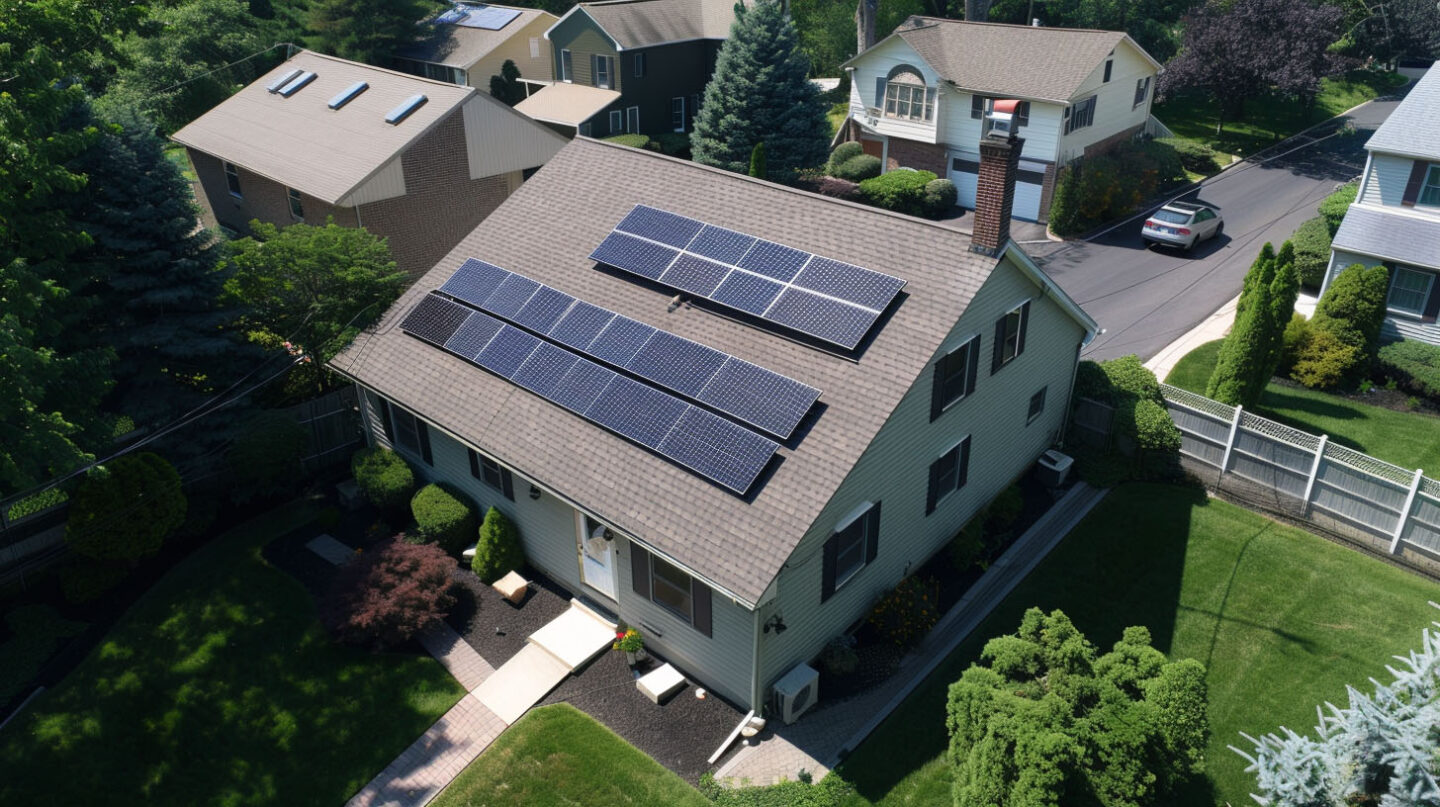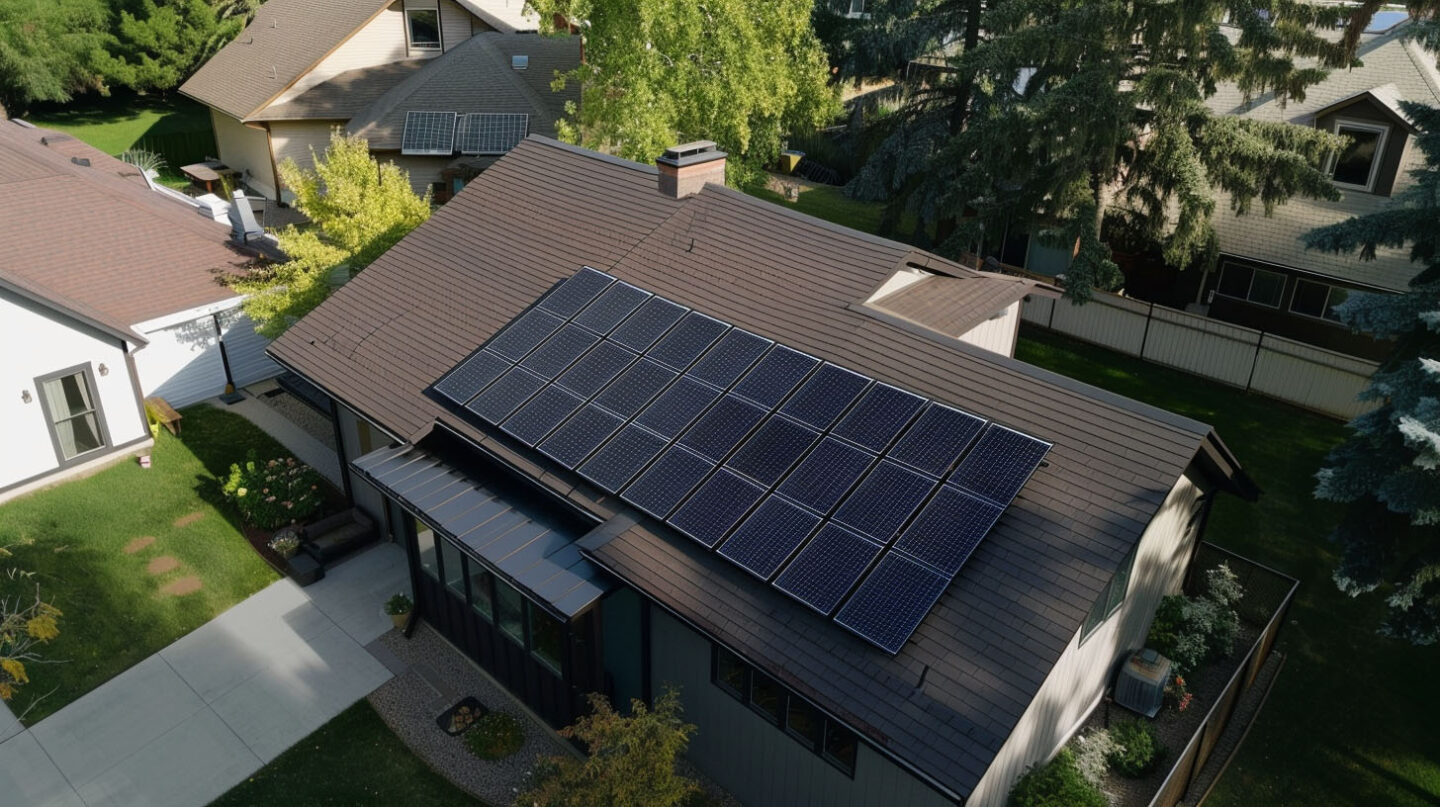Are you interested in harnessing solar energy but worried the beautiful, mature trees on your Durham, NC property will get in the way? You’re not alone. Many homeowners wonder if investing in a solar roof is worthwhile for shaded lots. At The Shingle Master, we pride ourselves on being a leading expert in roofing solutions. With years of experience and a commitment to quality, we understand these concerns and are here to help. This blog provides a reality check on solar shingle viability when you don’t have constant sun. With our expertise at The Shingle Master, we can guide you in making an informed decision that suits your unique property.
Understanding Solar Shingle Technology
Shingles represent a sleek and integrated approach to residential renewable energy. Unlike bulky rack-mounted panels, a shingle system is built directly into your roof, offering a seamless and aesthetically pleasing look that many homeowners prefer.
For those considering a switch to solar, understanding this technology is the first step. These shingles function as mini solar panels, turning sunlight into usable electricity for your home. We’ll look at how they work and how advancements are making them more effective.
How Solar Shingles Work
Solar shingles operate by converting sunlight into electrical energy through photovoltaic technology integrated into roofing materials. Unlike traditional roofing materials, these shingles serve a dual purpose, acting as both a protective layer and a panel system. Their design allows for seamless integration with the roof, optimizing energy generation, even in varying weather conditions. The energy produced contributes to powering homes, reducing energy bills, and minimizing the carbon footprint. With advancements such as power optimizers, roof shingles can achieve maximum output, ensuring homeowners benefit from their investment.
Key Differences Compared to Traditional Solar Panels
The solar shingle system offers unique advantages over traditional solar panels, particularly in aesthetics and integration. Unlike conventional roofing materials, roof shingles blend seamlessly into your home’s architecture, often resembling asphalt shingles. This minimizes visual impact while delivering energy production capabilities. Additionally, the installation process can be simpler, as a dual-function roofing and solution reduces the need for separate installations. These shingles also endure a range of weather conditions, ensuring longevity and effectiveness in maximizing energy output, even under partial shade scenarios.

What Happens When You Install Solar Shingles on Shaded Lots
When you install a solar shingle system on a shaded lot, the most immediate effect is a reduction in energy output. Solar technologies perform optimally in direct, unobstructed sunlight. Shade from trees, neighboring homes, or other roof obstructions will prevent the shingles from reaching their maximum output.
However, a reduction in efficiency doesn’t mean the system is useless. Your shingles will still generate power, just less of it. Understanding the degree of this performance drop is key to setting realistic expectations for your energy savings.
Direct Sunlight vs. Partial Shade Performance
Optimal performance of shingles relies heavily on direct sunlight for maximum output. In contrast, their efficiency diminishes significantly under partial shade due to roof obstructions like trees or neighboring buildings. While traditional panels may handle shade better with additional equipment such as power optimizers, solar shingles inherently struggle in shaded environments. Nonetheless, certain installation techniques and strategic placement can mitigate some of these challenges. Understanding the nuances of sun exposure greatly enhances energy production potential and informs better decisions for homeowners considering solutions.
Low-Light Output Realities
Performance under limited sunlight can significantly affect energy output. Solar shingles are designed to optimize energy production even in a variety of weather conditions, but they still require a minimum level of light exposure to function efficiently. In shaded areas, the energy output diminishes, potentially leading to higher energy costs. Homeowners need to consider roof obstructions, such as nearby trees or buildings, that may restrict sun exposure. Understanding these realities can help set realistic expectations regarding energy savings and overall effectiveness in shaded environments.

Factors Impacting Output on Shaded Roofs
Beyond the simple presence of shade, several other factors can impact the energy savings from your installation. The direction your roof faces, its angle, and the types of roof obstructions present all play a critical role in determining your system’s overall efficiency.
Before committing to shingles, it’s crucial to have a professional assess these elements. Understanding how your home’s specific characteristics interact with sunlight will help you decide if solar is a good fit and what kind of return you can expect.
Roof Orientation and Slope Considerations
Positioning plays a critical role in solar shingle performance. An optimal roof orientation enables roof shingles to harness the sun’s energy effectively, maximizing energy production throughout the day. Additionally, the slope of your roof influences energy output; steeper angles can enhance exposure to sunlight, especially in locations with varied weather conditions. The importance of evaluating these factors becomes evident, significantly affecting the energy needs of your home and overall efficiency of the installation. Proper orientation and slope ensure homeowners can achieve substantial energy savings and lower energy bills.
Effects of Nearby Trees and Structures
Proximity to trees and structures significantly impacts the energy output of solar shingles. These roof shingles can experience reduced efficiency due to shade created by nearby obstructions, particularly during peak sunlight hours. Notably, this decreased sun exposure can lead to lower energy production and may impede the overall benefits of the panel system. Homeowners should consider tree height, density, and adjacent buildings when evaluating their installation options. Consulting with solar experts can aid in assessing the impact of these natural and artificial barriers on performance.
Myths About Solar Shingles in Shaded Areas
There are many misconceptions about how solar shingles perform in shaded areas, leading some homeowners to dismiss the technology entirely. It’s easy to assume that if your roof isn’t in full sun all day, a solar investment is a waste of money.
Let’s debunk some of these common myths. By separating fact from fiction, you can form realistic expectations about your potential for energy production and make an informed decision. Understanding the truth can help you see if solar is still a smart move for your home.

Common Misconceptions Debunked
Numerous myths surround the effectiveness of solar shingles in shaded areas, often leading to misguided perceptions. A prevalent notion is that solar roof shingles can’t generate significant energy under partial shade. In reality, advancements like power optimizers can enhance energy output even when direct sunlight is limited. Another misconception is that installing solar panels on shaded lots is a waste of investment; however, the integration of innovative technology ensures viable energy production, maximizing potential tax incentives and ultimately contributing to lower energy costs for homeowners.
Realistic Expectations for Homeowners
Homeowners considering solar shingles must set realistic expectations regarding energy production, particularly on shaded lots. While solar shingle systems are designed to be robust, limited sun exposure can significantly impact their output. The installation process may yield enhanced aesthetics but won’t guarantee performance akin to traditional solar panels. It’s essential to consult with solar experts to understand potential energy savings and how factors like roof obstructions may affect overall efficiency. Balancing hopes with practical insights ensures a more informed decision when investing in sustainable energy solutions.
Pros and Cons of Installing Solar Shingles on Shaded Properties
For homeowners with shaded properties, weighing the pros and cons of solar roof shingles is a critical step. The main advantage is their aesthetic appeal—they offer a way to generate clean energy without the bulky look of traditional panels. However, the primary disadvantage is the reduced energy output caused by shade.
As a Durham homeowner, you can still access benefits like tax incentives and increased property value. But it’s equally important to understand the limitations before you invest. Let’s break down the key benefits and drawbacks.
Benefits for Durham Homeowners
Solar shingles present a unique opportunity for homeowners in Durham, NC, delivering a fusion of aesthetics and functionality. Unlike traditional roofing materials, these shingles offer integration with conventional roofing while harnessing renewable energy. Energy production remains efficient even in varied weather conditions, making them a smart choice for sustainability. Along with enhanced property value, homeowners may also enjoy significant energy savings, offsetting energy costs over time. Additionally, tax incentives like credits can further optimize the financial benefits of transitioning to this innovative solar shingle system.

Limitations You Should Know
While solar shingles offer innovative benefits, their limitations are crucial for homeowners to consider. Performance can significantly decline in areas with frequent roof obstructions that reduce sun exposure. Shaded lots may result in lower energy production compared to traditional solar panels, impacting the overall energy savings and efficiency. Additionally, the installation costs of solar shingle systems can be higher, and any potential tax incentives might not fully offset these expenses. Homeowners should carefully evaluate these aspects to make informed decisions about their roofing materials.
What’s Next
Incorporating solar shingles into shaded lots presents unique challenges and opportunities. While shading undoubtedly impacts energy output, advancements in technology, such as power optimizers, have made it possible to mitigate some of those effects. Homeowners should weigh both the benefits and limitations to align with their energy needs and goals. Our awards, including GAF Master Elite Contractor, BBB A+, Haag Certified Inspector, NC Licensed General Contractor, and Raleigh’s Best Roofing Contractor, reflect our commitment to quality and expertise. By researching sustainable options and consulting with solar experts, property owners can make informed decisions that contribute to a greener future, ultimately enhancing property value and achieving long-term energy savings.
Frequently Asked Questions
What are the drawbacks of solar shingles?
The main drawbacks of solar shingles include a lower energy output in shaded or low-light weather conditions, a potentially higher upfront cost compared to traditional roofing materials, and a more complex installation process. They also produce no power at night, requiring a supplemental energy solution.
Do solar panels work in shady areas?
Yes, solar panels and shingles do work in shady areas, but their energy production is less effective. They can still generate power from diffuse or ambient light, but you should have realistic expectations about the reduced output compared to a system installed in full, direct sun.
Read our blog: Storm Season Prep: DIY Roof & Gutter Checklist


